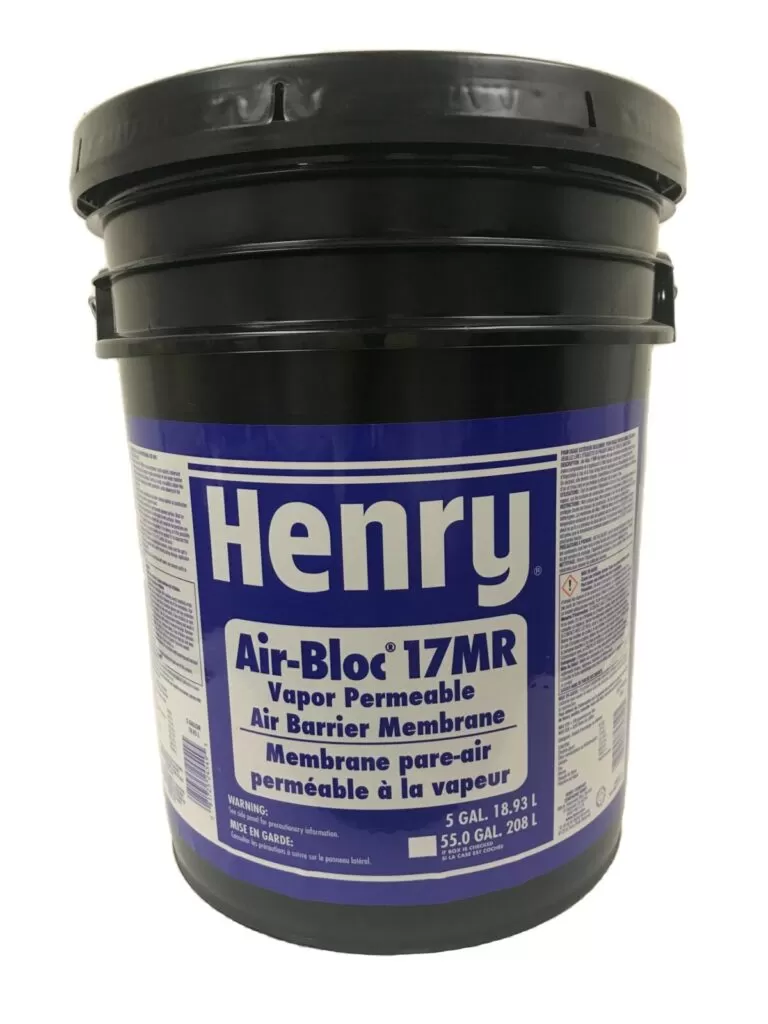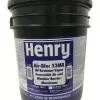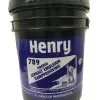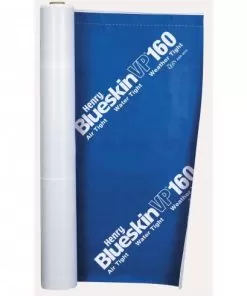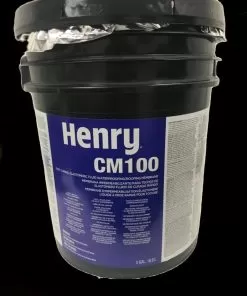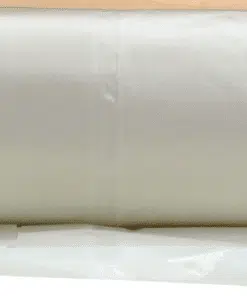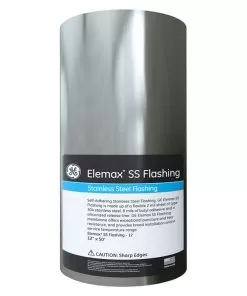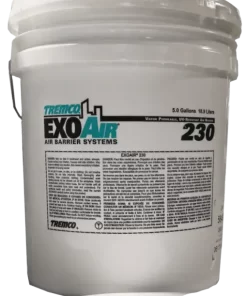Henry Air Bloc 17MR : Elastomeric Membrane
$255.80 – $2,100.00Price range: $255.80 through $2,100.00
- Low temperature application 20° F (-6° C) and rising with no additives required
- Fire resistant technology provides superior fire performance for compliance with NFPA 285
- Seamless, vapor permeable elastomeric membrane for above grade walls
- Integral mold resistant formulation
- Excellent adhesion to most construction surfaces such as exterior gypsum boards, CMU, concrete, stone, wood and metal
- Henry Air Bloc 17MR meets highest industry performance standards
Henry Air Bloc 17MR : Elastomeric Membrane
Henry Air Bloc 17MR is a liquid-applied, elastomeric membrane designed to provide a vapor permeable air and water barrier when applied to above-grade wall assemblies. It is single component, water-based and cures to a tough monolithic rubber-like membrane, which resists air leakage and water penetration. Henry Air Bloc 17MR includes antimicrobial technology to create an integral mold resistant membrane, and offers a broad application temperature range with proprietary fire resistance technology to achieve compliance with stringent NFPA 285 requirements. Questions? Contact Us.
Surface Prep: All surfaces must be sound, dry, clean and free of frost, oil, grease, dirt, excess mortar or other contaminants. New concrete should be cured for a minimum of 16 hours before Henry Air Bloc 17MR is applied. Concrete surfaces should be free of large voids and spalled areas.
Apply: Henry Air Bloc 17MR may be applied by brush, trowel or roller, however, application by conventional air assisted spray equipment in a single or dual-coat application is the preferred method. Apply in continuous, monolithic application without sags, runs or voids, transitioning onto flashing membrane to create a uniform drainage plane and air barrier. Regularly monitor wet mil thickness during application to assure adequate coverage. The preferred method of application is to mark areas off and ensure that the appropriate volume has been sprayed over this area. During spraying, the material should be applied in horizontal strokes ensuring even application of the product, and then applied in vertical strokes, again ensuring even application. In areas where surface is not uniform, i.e., slightly rough with the presence of small indentations and recesses, an added over-spray should be performed. This over-spray should be sufficient to fill the voids, without excessive material application such that slumping or running
of the material occurs.
Coverage Rates: Apply per published architectural specifications. Typical application rates include:
• Smooth Surfaces such as exterior gypsum sheathing or formed concrete: 4.25 gal US / 100 ft² (1.7 L/m²) to give a wet film thickness of approximately 70 mils (1.75 mm), and a nominal cured dry film thickness of 37 mils (0.94 mm), depending on texture and porosity of surface
• Rough Surfaces such as CMU: 5.4 gal US / 100 ft2(2.2 L/m2) to give a wet film thickness of approximately 90 mils (2.3mm) depending on texture and porosity of surface
Application Equipment:
• 5 Gallon Pail: Suggested Spray Equipment: Graco® 7900HD (2.1 GPM and 3300psi) airless sprayer with up to 250’ of 3/8” ID hose and a HD Mastic Gun using a .031-.045 XHD tip, or similar equipment.
• 55 Gallon Drum: Suggested Spray Equipment: Graco® 833HD (4.0 GPM and 4000psi) airless sprayer with up to 250’ of 3/8” ID hose and a HD Mastic Gun using a .031-.045 XHD tip, or similar equipment
Finish your job with Henry:
Henry Air Bloc Liquid Flashing
Joint and Crack Treatment: Joints between panels of exterior grade gypsum and plywood should be treated as outlined in the table below. Mortar joints on CMU walls should be struck full and flush with block surface. Cracks in masonry and concrete up to ½” (12 mm) wide shall be filled with a trowel application of 925 BES Sealant or Air Bloc LF and allowed to cure overnight prior to application of the liquid-applied air barrier to the surface, or alternatively, the cracks may be sealed with a strip of Blueskin air barrier. Transition joints between two dissimilar asphalt compatible materials at beams, columns, window and door frames, etc., should be sealed with strips of Blueskin air barrier, lapped a minimum of 3” (75 mm) on both substrates. Surfaces to receive Blueskin air barrier must be prepared per the applicable Technical Data Sheet. For non-asphalt compatible materials, contact your Henry representative for more information. Dynamic or expansion joint treatment must be in compliance with the project’s architectural details and specifications.
| Weight | 51 lbs |
|---|---|
| Dimensions | 15 × 15 × 18 in |
| Size | 5 Gallon Bucket, 55 Gallon Drum |
Related products
Air and Vapor Barrier
Air and Vapor Barrier
Air and Vapor Barrier
Air and Vapor Barrier
Air and Vapor Barrier
Air and Vapor Barrier
Air and Vapor Barrier
Air and Vapor Barrier





